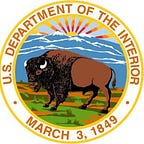Sailing Toward a Life of Mentorship: An Arctic Youth Story
By Jannelle Trowbridge, Arctic Youth Ambassador
“I tell my students, ‘When you get these jobs that you have so brilliantly trained for, just remember that your real job is that if you are free, you need to free somebody else. If you have some power, then your job is to empower somebody else. ‘This is not just a grab-bag candy game.”
— Toni Morrison
This quote means a lot to me. Growing up, I knew it was important to work hard, but along the way, I learned how important it is to have help from others.
I’ve been lucky to have mentors; great people who have impacted and empowered me. Now I’m trying to follow their example and pay it forward, helping younger students and promoting youth involvement.
I was born in Grand Rapids, Michigan, and moved around a lot with my family, led by my first mentors: my parents. My parents worked hard to pursue their ambitions. In the summer of 2008, I was 10 years old when my family of four moved onto our 30-foot wooden sailboat, bound for an uncertain future.
We sailed through the Great Lakes and the Saint Lawrence Seaway. We landed for a winter in Newfoundland. The next summer, we journeyed to Greenland and on my 11th birthday, we left Greenland in pursuit of the Northwest Passage. After a journey through the Arctic, we finally landed in Nome, Alaska. I enrolled in 7th grade and quickly embraced life in Alaska. Within a year, we had a dog team.
I learned how to navigate Nome’s environment more efficiently than any other place I had ever lived. I loved my life there, so leaving Nome for college at the University of Alaska Anchorage six years later silently shocked me more than eating muktuk — a traditional meal of whale skin and blubber — and learning to mush.
Thankfully, a campus counselor in Nome encouraged me to apply for the Alaska Native Science and Engineering Program’s Summer Bridge component. This program really helped me prepare for college. I spent a month living on campus and taking an intense five-week trigonometry course. With the help of my ANSEP peers, I survived.
The next month, I worked with one of ANSEP’s partners, the United States Geological Survey. I spent two weeks in the Chukchi Sea collecting bivalves to see how their growth rings compared to sea ice data.
After a quick trip home, I was thrown into college. Anchorage became a foreign reality and I missed my family.
I quickly learned the powerful value of networking and how it is vital to future success. My ANSEP network of peers guided my adaptation. I continued to work for USGS and my mentor there recommended me for the Arctic Youth Ambassadors Program. I applied, curious to understand the politics of science in the Arctic. The program did more than that. It empowered my voice. It took 22 youth from around the state and put us in places to talk and inform people of our experiences in our different backgrounds.
When I started looking at issues in Alaska, or even in other states, I began to realize that the people directly affected often do not have the presence and voice they need. The piece often lacking is a network. Better communication and representation is vital. I have also seen the power that youth program outreach has. I see that when people are given the tools and support they need, they can make the change they want to see. When active and enabled youth advance an issue, people will give more attention to underserved communities and support the important diversity needed in problem solving.
What happens in the Alaskan Arctic will not stay here.
We need to involve youth so that we are equipped to handle the ongoing changes and upcoming challenges. The future depends on it.
The Arctic Youth Ambassadors program was established by the U.S. Fish and Wildlife Service-Alaska Region, U.S. Department of the Interior, and U.S. Department of State in partnership with nonprofit partner Alaska Geographic.
More Stories from Arctic Youth:
